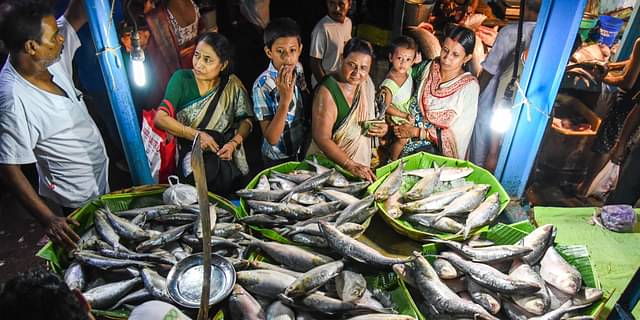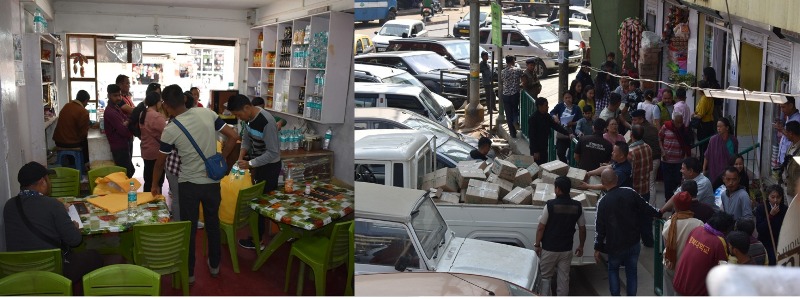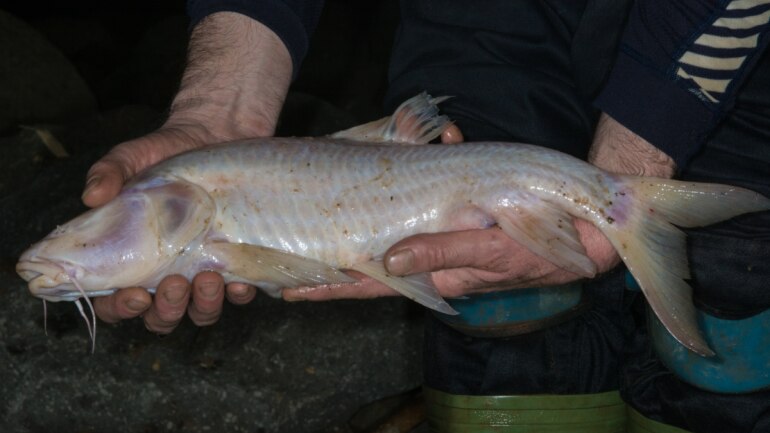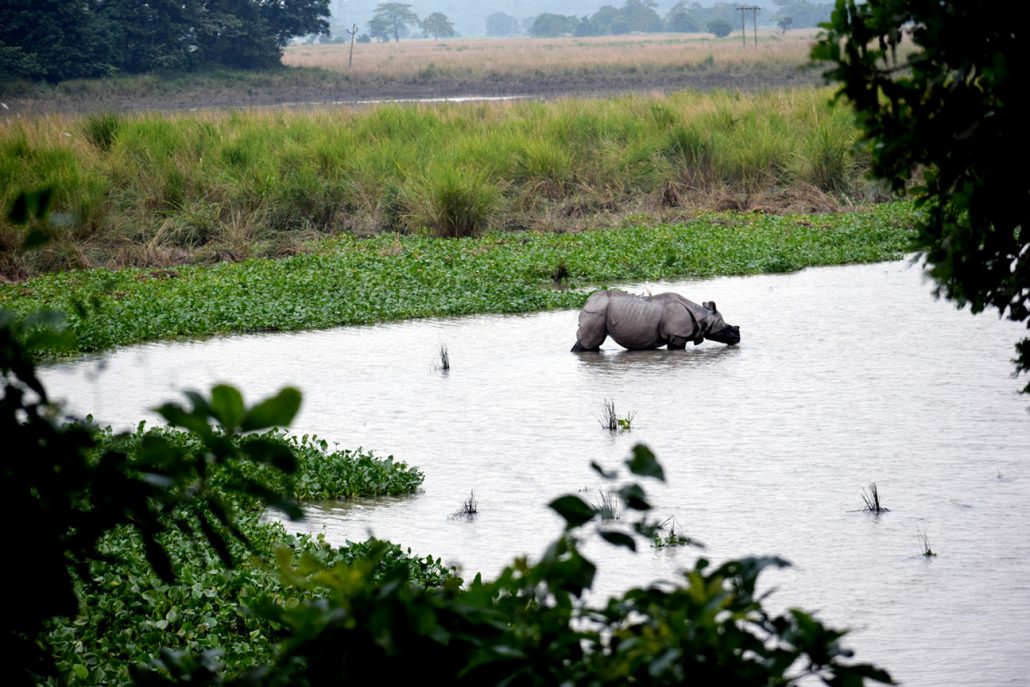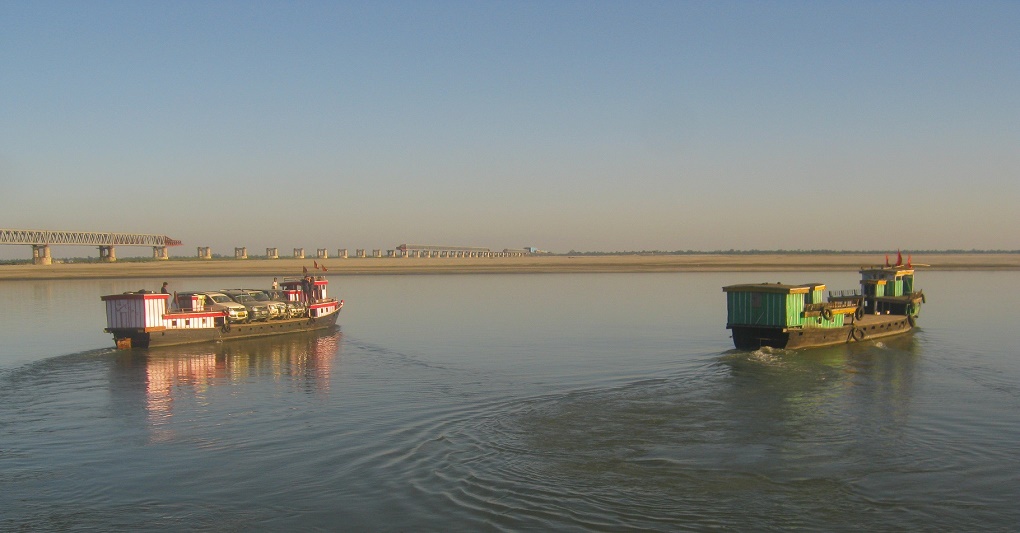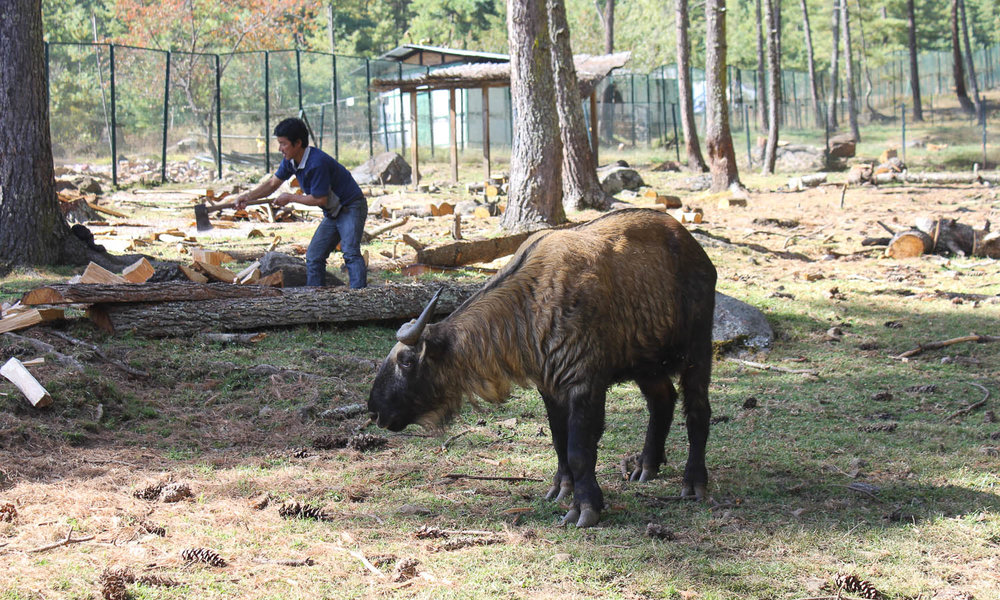On the eve of Maghi Purnima, while marine fishers were preparing for Ganga puja at West Bengal’s Sagar Island, everyone was talking with a sense of foreboding. Abdar Mallik, secretary of Sagar Marine Matsya Khuti Cooperative Society, said, “Bajar bhalo na, Goto teen bochor ilish aschhena,” (Translated: The market is not in a good state. As a result, we haven’t been receiving any hilsa here for the last three years).
The decline in the production of hilsa on the Indian side (West Bengal) of Bay of Bengal has been a rising concern in the recent past. Researchers claim hilsa is destroyed by over-exploitation in northern Bay of Bengal, which has threatened the livelihoods of over 26,000 fishers in West Bengal.
Unsustainable Fishing Practices
In a recent study, scientists questioning the sustainability of hilsa fishing practices in the northern Bay of Bengal region. They suggested that excess of licensed fishing trawlers are responsible for declining hilsa stock. From the estuary of the Ganga to deep in the Bay of Bengal, about 15,000 trawlers are hovering in the migratory path of the hilsa as the fish approaches the river to spawn, and on its way out.
The study revealed that between 2002 and 2015, even though the number of boats engaged in fishing increased by 25%, the hilsa catch dipped by 13%. “In spite of the ban on nets with mesh holes less than 90 mm, such nets are used most of the time. A very large number of juvenile hilsa are caught regularly. Apart from this hundreds of nets, each around 1-2km long, block the mouth of the estuary. How will the fish enter the river?” asked Debasish Shyamal, district president of Dakhhinbongo Matsajibi Forum.
The damage is twofold – the possibility of getting mature hilsa in the future is reduced, and it also hampers the reproduction of the fish. Shyamal further explained, “West Bengal has 158km coast line, comparatively smaller coast line than others but production rate is higher than other coastal states. Government is always pushing to increase production numbers without thinking the environmental consequences. In 2012 hilsa production in the state was 8510 tonnes. According to fisheries department data 14203 tonnes hilsa caught in 2016. As result trawlers involved in destructive fishing practices to increase production numbers.”
Bottom trawling is prohibited up to 12 nautical miles from the coastline but small fishers alleged that trawlers start trawling just 1km from the coastline that threatened life of traditional small fishers. Moreover, trawler owners claim they do mid-level water trawling but in reality it is similar to bottom trawling.
Professor Sugata Hazra, director of School of Oceanographic Studies, Jadavpur University further elaborated:
“In case of Tamil Nadu, after 12 nautical miles from coastline you will get deep sea but in northern Bay of Bengal after 12 nautical miles water level is shallow as this area fall under delta region. So, trawler shouldn’t do fishing within 30 nautical miles from Bengal coastline to stop habitat destruction of marine biodiversity.”
fbtw
Ban Without Surveillance
In order to increase production of hilsa and other fishes, every year Fisheries Department of Government of West Bengal issues notifications to control fishing. According to circular, from 15 April to 31 May, fishing is prohibited in the sea and adjoining areas.
Moreover, a special ban is imposed specifically for the conservation of the hilsa during 15 September to 24 October. This system was initiated for the undisturbed breeding of hilsa. Besides fishing, selling, transporting and hoarding of hilsa, less than 23 cm long hilsa is prohibited.
However, Debasish Shyamal of Dakhhinbongo Matsajibi Forum said, “This is just an eyewash from state fisheries department.”
Accepting that the ban is not obeyed by some fishers, a fisher working in trawler at Diamond Harbour in South 24 Parganas district, who wished to maintain anonymity, claimed, “A mature hilsa weighing between 700 grams and a kg but we don’t obey any rule once we get large number of fish in sea. If 500 kg of hilsa is caught, large portion of that weighing below 200 grams, all juvenile fish, even we catch 50 gm hilsa which also has a good market.”
In the absence of government surveillance, juvenile hilsa fishing goes on. Shyamsundar Das, Secretary of the trawler owners’ association – United Fishermen’s Association denied all allegations against trawlers and dismissed the claim of overfishing. He told, “How do you define overfishing while government has not yet put any limitation per trawler. We catch fish according to act and beyond 12 nautical miles which is not state subject.” Das further questioned the act regarding mesh size, “The act says 90mm mesh for hilsa and 40mm for other fishes, then how could one use 90mm while others are using 40mm mesh to catch fish.”
They claimed that they are trying to observe the fishing ban and prohibition on mesh size and urged government to exempt taxes from diesel.
Chandranath Sinha, Minister of Fisheries, Government of West Bengal, claimed, “Overall fisheries department has successfully implemented the fishing ban during the spawning period across the coast. Few fishers from Odisha used to catch juvenile fishes and then export it to West Bengal market.” He further explained that state government continuously conducting awareness campaign among fishers about ill impact of overfishing.
“State has notified the ban but there’s no surveillance on ground. Bangladesh has a strict winter ban during September-October. There’re many instances that they (Bangladesh) burnt nets and all fishing equipment those ventured into fishing during this period. Our government must take such steps to minimise the destruction,” said Professor Hazra.
Traditional fishers alleged fishing space is gradually occupied by those from other livelihood background. Nowadays most labours working in trawlers came from Jhargram, West Medinipur district.
Traditional fishers alleged fishing space is gradually occupied by those from other livelihood background. Nowadays most labours working in trawlers came from Jhargram, West Medinipur district.
With the fishing space so crowded and the catch uncertain, respecting restrictions on the size of the fishing net or the ban on catching small-sized hilsa becomes a real challenge. State fisheries department has started a livelihood scheme in 2013-14, there are several difficulties in implementation. Abdar Mallik, member of small fishers’ union of Sagar Island alleged, “Department has started data collection about the number of fishers who depend on hilsa for a livelihood but the data is not yet available. Even vending units given to the panchayats were distributed to those who are not engaged in hilsa fishing at all. ”
Earlier, there was a savings cum relief schemes for fishers where a fisher contributes Rs 900 and state fisheries department and National Fisheries Development Board (NFDB) also contribute same amount.
“This scheme is not active anymore. State says central government isn’t giving their share,” said Debasish Shyamal of small fishers’ union – Dakhhinbongo Matsajibi Forum. Moreover, there is no subsidy available for small fishers in the state. “Trawlers get modernised jetty, toilets and free ice inside harbour but there’s nothing for Khuti (fish landing centres) fishers. How we’ll (small fishers) survive during ban period?” asked Shyamal.
Huge quantities of hilsa fish have reached Kolkata market. Demand for hilsa in Bengali cuisine is always high.
Huge quantities of hilsa fish have reached Kolkata market. Demand for hilsa in Bengali cuisine is always high.
(Photo: Tanmoy Bhaduri/ The Quint)
State fisheries minister claimed, “All fishers in the state get Rs 2 per kg rice throughout the year. If anyone left out of the list we will definitely include them.” Many fishers in South 24 Parganas alleged that benefits announced by the government does not reach all sections. “The trend that we are seeing is most fishermen migrate out of Bengal to Andhra Pradesh and Kerala for better livelihood,” Abdar Mallik claimed.
Moreover, researchers claim there has been an overall decline in natural fish stock in all of the major river transboundary river systems across India and Bangladesh that impacted traditional small fishers. The Bangladesh government has introduced an extensive hilsa management action plan to increase hilsa production not only by conserving the juveniles but also by protecting the brood fish during breeding seasons by imposing a ban on fishing and restricting the mesh size. The Bangladesh Government also offers vulnerable group feeding programmes for underprivileged fishers during the ban period. “If state government support fishers with alternative scheme during ban period like Bangladesh do, we can successfully conserve hilsa as well as livelihoods of fishers,” said Professor Hazra.
(Tanmoy Bhaduri is Kolkata-based independent journalist who focuses on social, cultural and environmental issues. This story was produced with the support of Internews’ Earth Journalism Network.)
We’ll get through this! Meanwhile, here’s all you need to know about the Coronavirus outbreak to keep yourself safe, informed, and updated.
(Make sure you don’t miss fresh news updates from us. Click here to stay updated)



